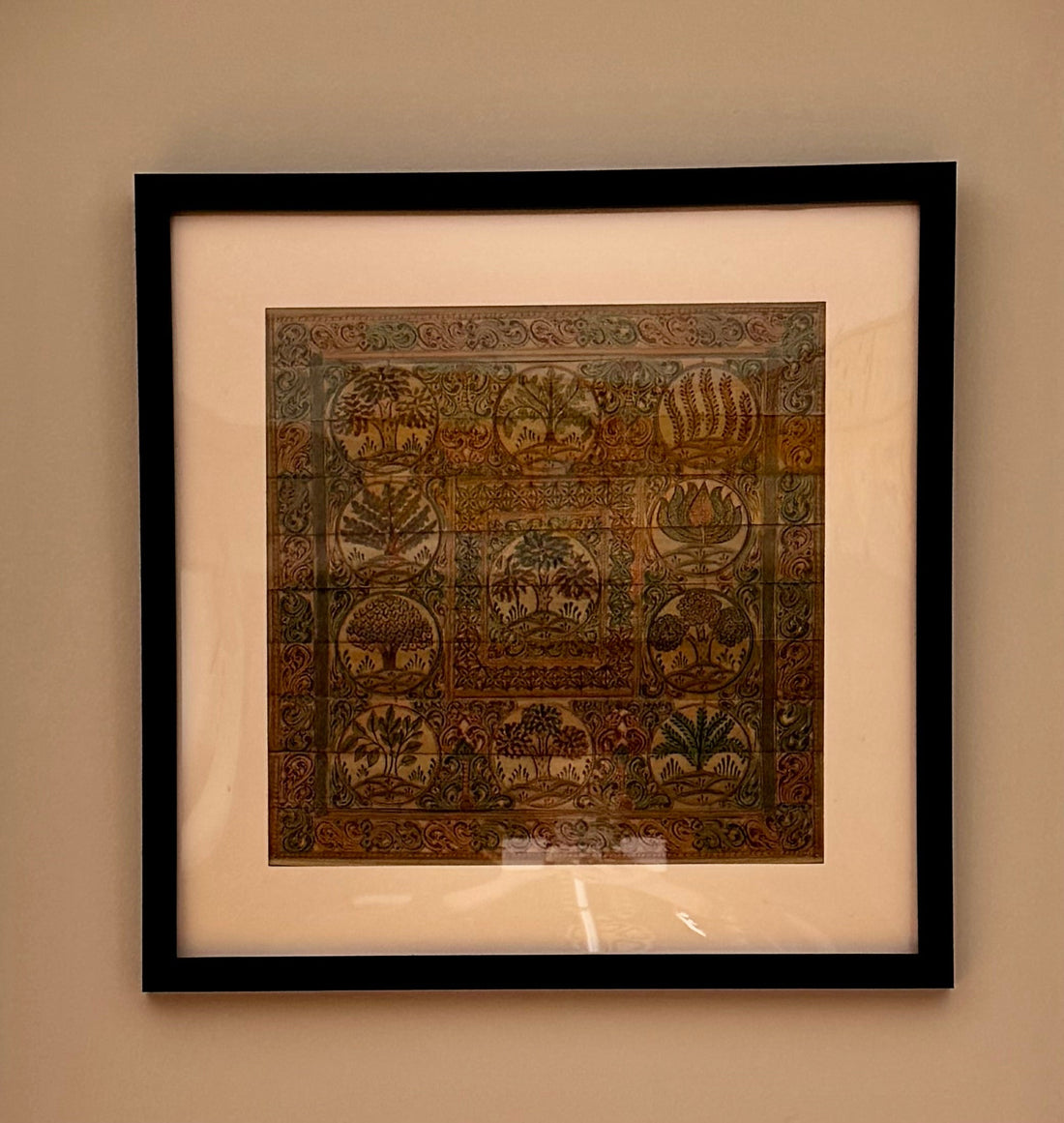
Tala Pattachitra : The Ancient Art of Palm Leaf Etching from Odisha
Before there were books, there were palm leaves.
Tala Pattachitra — derived from Tala (palm) and Patta (leaf or canvas) — is a sacred form of scroll painting from Odisha, India, where stories aren’t painted, but etched with an iron stylus onto dried palm leaves. Blackened with natural inks and stitched together with cotton thread, these scrolls unfold tales of gods, goddesses, myths, and morality — sometimes read aloud in temple courtyards, sometimes whispered across generations.
The Origin of Tala Pattachitra
This art form flourished in the temple town of Puri, home to Lord Jagannath. For centuries, chitrakars (painters and scribes) would gift these scrolls to devotees, filled with mythological scenes, epics like the Ramayana and Mahabharata, and temple iconography.
Unlike canvas paintings, palm-leaf Pattachitra was interactive and sacred — rolled open slowly as stories were narrated during religious festivals or family gatherings.
It wasn’t just art. It was scripture, cinema, and storytelling in one — designed for the ear as much as for the eye.
How It’s Made: The Art of Etching Stories
Each piece begins with dried palm leaves, soaked and sun-dried until they reach a parchment-like state. Artisans then:
- Etch fine lines using a metallic stylus — no sketching, no second chances.
- Rub charcoal paste into the grooves to make the figures visible.
- Stitch leaves together with thread to form a scroll.
- Optional: Some pieces are lightly tinted with natural pigments, but most stay monochrome — stark, detailed, and reverent.
The result? An artwork that looks ancient the moment it is born.
Why Tala Pattachitra Still Matters Today
In a world of mass-produced prints, Tala Pattachitra invites you to pause.
To trace stories with your fingers. To hear mythology in monochrome.
For second- and third-generation Indian diaspora, it’s a way to connect with heritage — not through textbooks or rituals, but through textures, symbols, and storytelling.
And for heritage lovers everywhere, it’s a minimalist-meets-mystical collector’s dream — perfect for framing, gifting, or anchoring a quiet corner of your home.
How to Style Tala Pattachitra in a Modern Home
Frame a single leaf in a deep black or raw wood frame for a quiet, meditative look.
Cluster a series of smaller scrolls together to tell a visual story across your wall.
Style with linen, jute, terracotta, or brass — materials that respect the earthiness of the scrolls.
Whether displayed in a reading nook, entryway, or meditation space, each piece brings more than beauty — it brings belonging.
How to Tell If It’s Authentic
When shopping for palm leaf Pattachitra:
-
Look for visible etching lines — each stroke is carved, not drawn.
-
Check the material — true scrolls use Tala Patra, not paper or synthetic substitutes.
-
Ask about the chitrakar or artisan — knowing the name of the artist continues the tradition of oral storytelling and respect.
House of Saaj’s Tala Pattachitra Picks
We curate rare and timeless pieces from artisan families in Odisha — including:
- Miniature palm-leaf scrolls featuring Jagannath stories
- Etched coconuts and betel nuts with sacred motifs
- Temple-shaped wooden frames housing these delicate scripts
Each piece is ethically sourced, heirloom-worthy, and packed with care for homes that crave cultural depth.
From Heritage to Heirloom
Tala Pattachitra isn’t just for collectors — it’s for the culturally curious, the rooted wanderers, the quiet rebels who don’t want loud décor but want their walls to whisper stories.
Own a piece of India’s storytelling tradition.
Let your home carry a sacred echo of the past.
🖤 Explore the Palm Leaf Collection:
https://houseofsaajboston.com/products/pattachitra-art-on-palm-leaf
